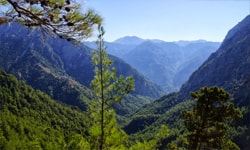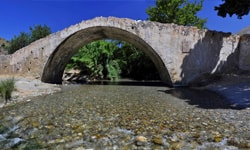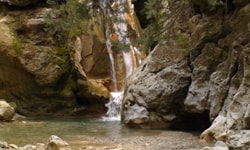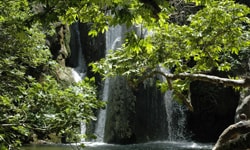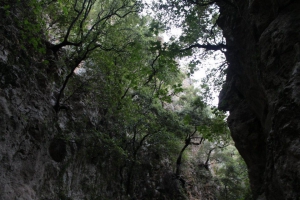The Gorge of Ambelos is located southeast of Gonies village (Hersonissos Municipality), just about one km from the southern limits of the village. The approach is easy from the rural road, which runs through the gorge, along the bed of a tributary of Aposelemis river.
The canyon of Panagia (Virgin Mary), also known as Kalami I is parallel to the gorge Xerofarago or Kalami II and takes its name after the former monastery of Panagia Keralimeniotissa located at its exit.
The canyon of Chosti is formed by the small settlement of Hosti in Chania, amid one of the most beautiful and lush green places of Crete. Away from the known tourist routes, it remains completely unknown and yet untouched. You will not find in any tourist guide referring to it, though it is a jewel of western Crete and is one of the most beautiful small canyons small, which can be easily crossed without any canyoning equipment.
Kissano Gorge is located 1km north of Kissos village, in Amari valley, and 34km southeast of Rethymnon, connecting the village το the small plateau of Gious Kambos. It is a short, but beautiful gorge, crossed by the rural road of the area.
The exit of the gorge Tsigounis is located 1km west of the village Sfaka, Sitia district, on a turn of the main road connecting central Crete to Sitia. The river flowing through the gorge gets its water from the plateau Monokara and is "stingy" (tsigounis means stingy) as it has small quantities of water only in winter.
The name Havgas and its corruptions (eg Chavgoudi, Ha) is very common in the gorges of East Crete. Thus, one more Cretan gorge named Havgas is located above Plaka, by Elounda. The gorge starts east of Fourni, passes below the village Havgas and exits at Plaka.
West of the village Rogdia a small gorge is formed that exits at the area of Paliokastro. It initially starts at position Koukos, where we meet the ruins of an old watermill.






